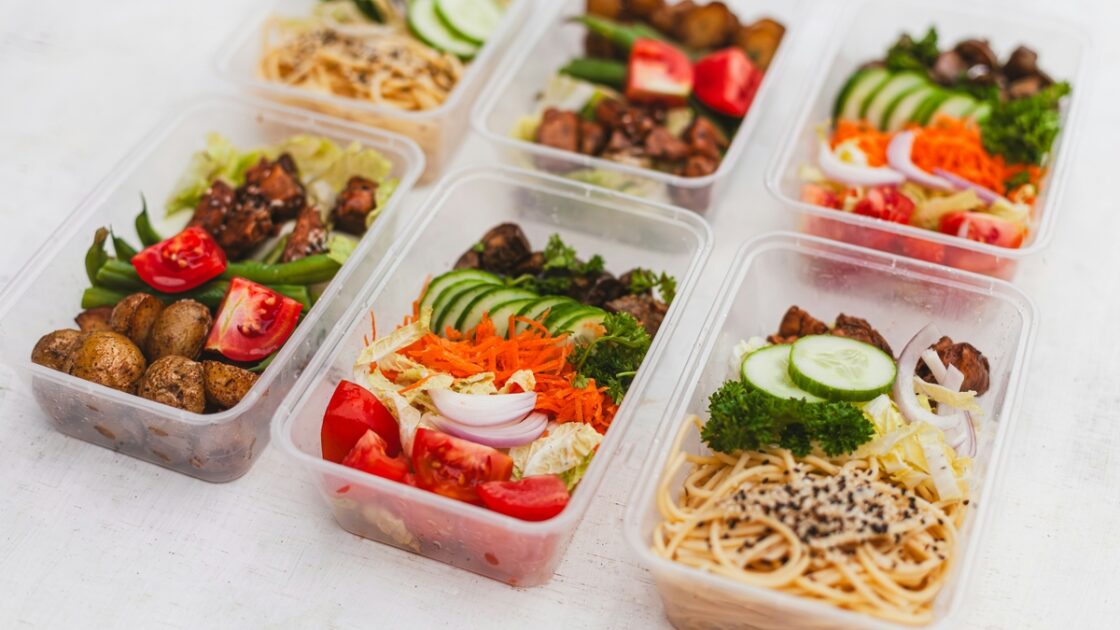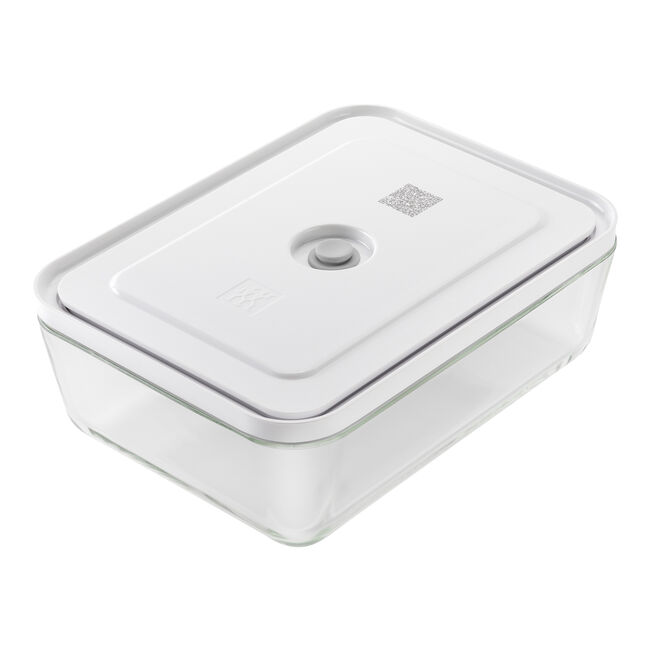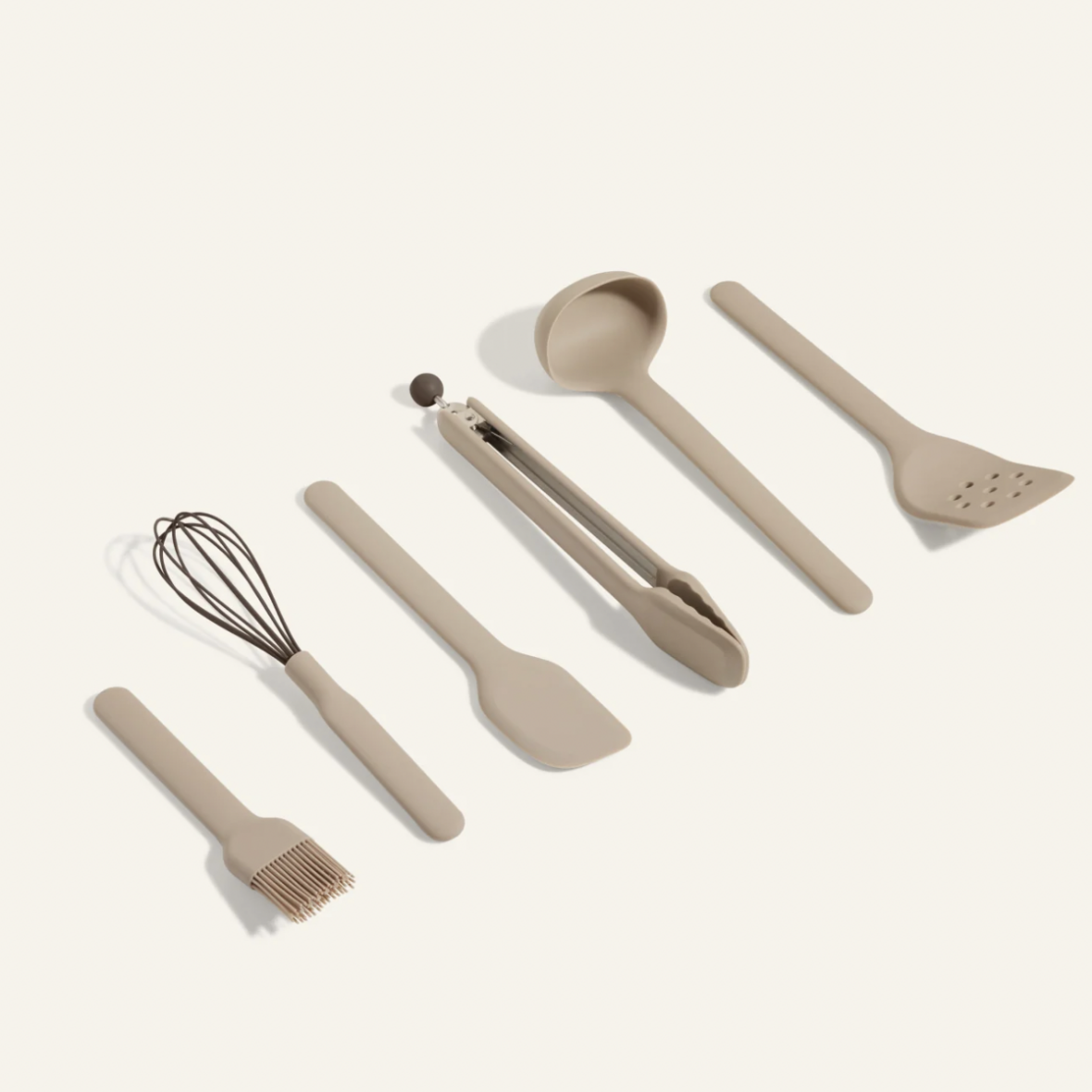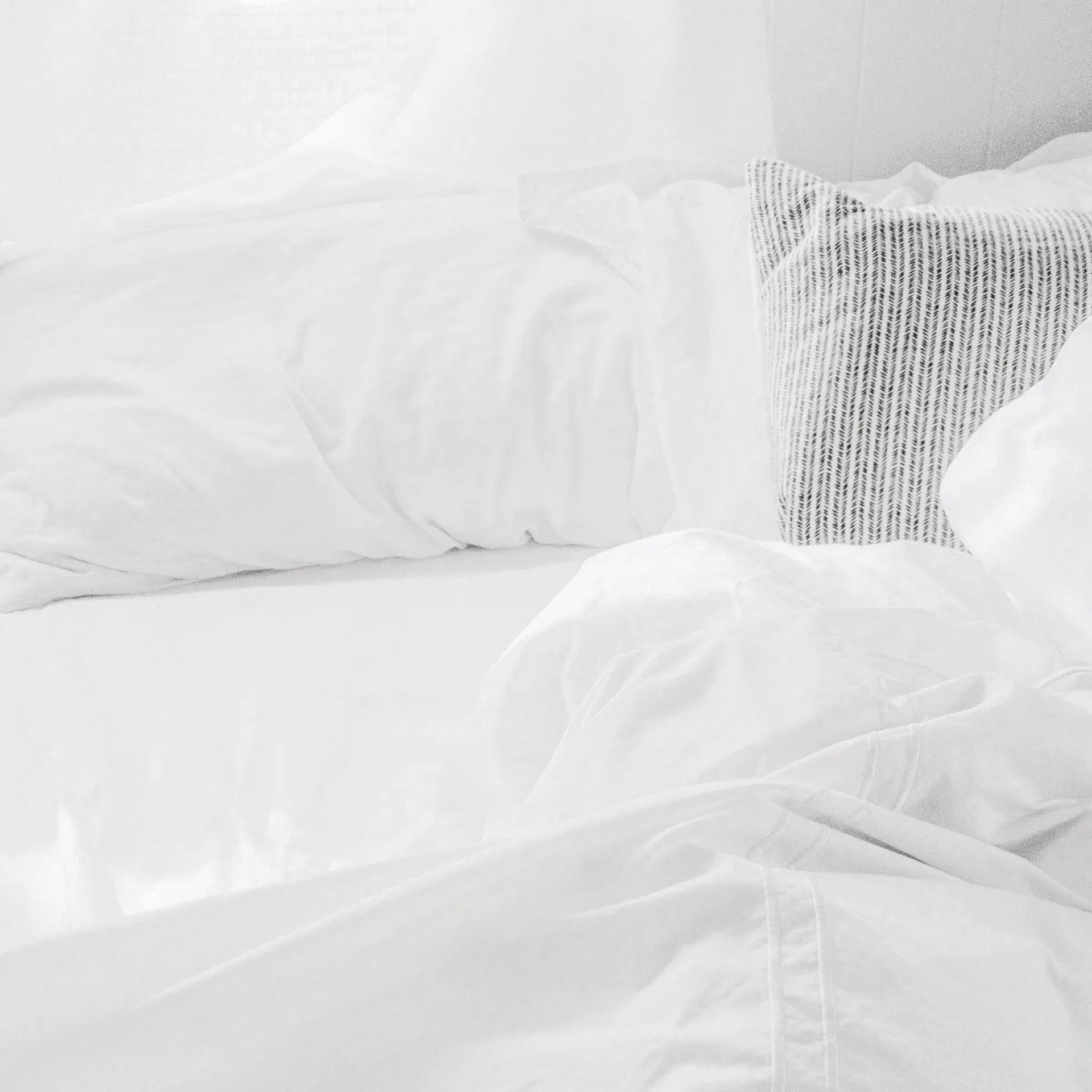How to Avoid Microplastics: Start in the Kitchen with 6 Easy Swaps
We all know microplastics are bad, but is there anything we can do to avoid exposure? Yes — and the kitchen is the best place to start.

It’s no longer big news: Microplastics are a pervasive problem around the world, present in everything from our oceans to breast milk1. These plastic particles come from the breakdown of plastic waste, and given their tiny size —– about <5000 μm —– they can easily find their way into the food we eat, the water we drink, and the air we breathe.
Inevitably, the health hazards of these omnipresent plastic particles have continued to stack up. While it’s more difficult than ever to stay away from them completely, understanding how to avoid microplastics in your own home can make a world of a difference.
The Risks of Microplastics
As tiny as they are, these microplastics can do serious damage. A 2023 study in Yonsei Medical Journal cited blocked digestion and negative effects on the mucous membrane of the gastrointestinal tract2, while 2024 research from the New England Journal of Medicine found that microplastic exposure could contribute to increased risk of myocardial infarction or stroke3.
An article from the Magazine of the Harvard Medical School added potential ramifications ranging from oxidative damage, endocrine disruption, and impacts on reproductive health4. Finally, 2024 research in Life Sciences found an “alarming” link between microplastic contamination and an increased risk of various kinds of cancer, including lung, blood, breast, prostate, and ovarian5.
Sources of Microplastics In Your Kitchen
Microplastics are so pervasive that they’re nearly unavoidable in the modern world. Recent research has found that their presence in the air means that even plants are contaminated6. But perfect is the enemy of good, and there are still ways that you can reduce your exposure. To minimize the microplastics you ingest, we recommend starting in the heart of the home — your kitchen. Here are the worst culprits to prioritize for a kitchen clean-out.
1. Plastic Cutting Boards

Not only are plastic cutting boards more likely to harbor dangerous bacteria than wood, but plastic cutting boards can also introduce substantial amounts of microplastics into our food.
Plastic cutting boards may seem like they’re cleaner and safer than porous wood, but research has shown that the opposite is true. If you want to know how to avoid microplastics, this is a big one. Not only are plastic cutting boards more likely to harbor dangerous bacteria than wood7, (especially in the gashes that form in the material over time), but plastic cutting boards can also introduce “substantial” amounts of microplastics into our food.
According to a 2023 study in Environmental Science & Technology, a person using a plastic chopping board could increase their microplastic exposure by up to 50 grams in a year — roughly the same weight as a golf ball8.
What to Use Instead

Instead of a plastic cutting board, opt for a heavy, end-grain cutting board like the ones from John Boos, an artisan who’s been making wooden cutting boards since 1887. End-grain boards are more durable, and they’re great at also wicking dangerous bacteria away from the board’s surface of the board. This bacteria gets pulled into the wood, where they’re killed off thanks to the lack of oxygen. And they’re beautiful to boot.
2. Plastic Food Storage Containers

Plastic food storage containers are light, easy, and affordable — but none of those pros outweigh the risks they pose to our health. 2023 research in Environmental Science & Technology found that plastic containers and reusable food pouches leached as many as 4.22 million microplastics per square centimeter. And how much plastic we eat also varied widely depending on how the containers were used9.
The study highlighted a key point: understanding how to avoid microplastics isn’t just about what you use in the kitchen, but how you use it. Microwaving food in plastic containers was the most egregious use case when it came to leaching microplastics, though refrigerating food and storing food at room temperature for over six months also contributed to microplastic contamination.
While we’re at it, it’s also time to kick the habit of reusing single-use plastic containers. As much as we’re fans of upcycling, this isn’t the place to get resourceful. A 2020 study in the Journal of Hazardous Materials estimated that those who eat takeout four to seven times weekly could ingest over 200 pieces of microplastics through single-use takeout containers10. Polystyrene containers with rough surfaces were some of the worst offenders, the study authors found.
What to Use Instead

Swap out your plastic storage containers for a range made of glass, like these nestable and stackable containers from Zwilling. Glass containers are safe when in contact with food, and they’re a great durable and non-toxic alternative to plastic.
3. Plastic Wraps and Bags

Keeping food in plastic bags or plastic wrap is another way you might be accidentally introducing microplastics into your diet. 2021 research in Environmental Nanotechnology Monitoring & Management found that these plastics could leach into food, particularly when moist, heated, or exposed to light11.
What to Use Instead

Make use of those new glass storage containers, or cover leftover food with reusable wraps like Bee’s Wrap, made from safe, sustainable wax-coated cotton.
4. PFAS-Coated Nonstick Cookware
Research found that a single crack in a Teflon-coated pan can release about 9,100 plastic particles into your food.
Nonstick cookware coated with PTFE isn’t just awful for the environment; 2024 research in Science of the Total Environment reports that it’s also been found to release dangerous micro- and nanoplastics into foods12. This is even more concerning when it comes to older cookware — research found that a single crack in a Teflon-coated pan can release about 9,100 plastic particles into your food13.
What to Use Instead
It’s well past the time we did away with traditional nonstick cookware in favor of safer options. In this case, understanding how to avoid microplastics isn’t such a chore — you’ll get gorgeous, well-made cookware in return.

GreenPan’s ceramic nonstick cookware offers a durable, beautiful, and plastic-free alternative, and MadeIn offers chef-tested, long-lasting ceramic nonstick made with their proprietary CeramiClad™ technology. When used properly, these PFAS-free alternatives perform just as well as traditional nonstick.
5. Plastic Kitchen Utensils

Plastic kitchen utensils, especially those that have been scratched or fragmented, can also contribute quite a bit of microplastic residue to your dinner14. Black plastic utensils like spatulas are particularly nefarious, with the potential to introduce not just microplastics but flame retardants, according to a 2024 study in Chemosphere15.
According to a 2024 study in the Journal of Hazardous Materials, just one month of eating hot meals off of plastic tableware could contribute to significant microplastic exposure, leading to changes in microbiota abundance and metabolite levels in just a few short weeks.
Disposable plastic tableware is also concerning for both the environment and our health. According to a 2024 study in the Journal of Hazardous Materials, just one month of eating hot meals off of plastic tableware could contribute to significant microplastic exposure, leading to changes in microbiota abundance and metabolite levels in just a few short weeks16.
Reusable plastic tableware isn’t completely safe either. 2022 research in Food Packaging and Shelf Life tested melamine bowls for microplastics after washing only once vs. 100 times. The bowl that had been washed 100 times tested higher for microplastic residue, indicating that more microplastics were released over time17.
What to Use Instead

When you can, invest in tableware and utensils that are built to last. The good news is that there are a lot of beautiful plastic-free options out there. Try these handcrafted ceramic plates in a host of warm hues, and choose non-toxic utensils, like these BPA-free silicone cooking utensils from Our Place.
6. Plastic Water Bottles and Cups

Plastic water bottles and cups are another terrifying source of microplastics in food, given that most of us use these items from time to time. A 2024 study in the Proceedings of the National Academy of Sciences found that a liter of bottled water contained an average of 240,000 tiny pieces of plastic18 —– ten to 100 times more than previously estimated19.
What to Use Instead

Instead of drinking from plastic, consider investing in beautiful colored glassware, like this set from Our Place. Made from a combination of recycled glass and sand, these sturdy glasses are far more pleasant — and safe — to drink from than plastic. They’re also easily and safely refilled, thanks to the company’s matching glass carafe.
For drinking water on the go, we love the light and simple 27-ounce water bottle from Klean Kanteen. It’s made from sustainably harvested bamboo, stainless steel, and food-grade silicone, enabling microplastic-free hydration every time you take a sip.
Final Thoughts on How Much Plastic We Eat
In today’s world, it’s hard to completely control how much plastic we eat — but there are still concrete steps we can take to reduce our exposure. Start by replacing one item at a time, with the ultimate goal of making your home a plastic-free zone (or as close to it as you can!). As long as you’re making progress, you’re moving in the right direction.
Sources:
- https://pubmed.ncbi.nlm.nih.gov/39064070/
- https://pmc.ncbi.nlm.nih.gov/articles/PMC10151227/
- https://www.nejm.org/doi/full/10.1056/NEJMoa2309822
- https://magazine.hms.harvard.edu/articles/microplastics-everywhere
- https://www.sciencedirect.com/science/article/abs/pii/S0024320524005277
- https://www.nature.com/articles/s41586-025-08831-4
- https://pubmed.ncbi.nlm.nih.gov/31113021/
- https://pubmed.ncbi.nlm.nih.gov/37220346/
- https://pubs.acs.org/doi/10.1021/acs.est.3c01942
- https://www.sciencedirect.com/science/article/abs/pii/S0304389420309584
- https://www.sciencedirect.com/science/article/abs/pii/S2215153221001835
- https://www.sciencedirect.com/science/article/pii/S0048969724027232
- https://www.sciencedirect.com/science/article/abs/pii/S004896972205392X?via%3Dihub
- https://www.sciencedirect.com/science/article/pii/S016041202400326X
- https://www.sciencedirect.com/science/article/abs/pii/S0045653524022173?via%3Dihub
- https://www.sciencedirect.com/science/article/abs/pii/S0304389423020848?via%3Dihub
- https://www.sciencedirect.com/science/article/abs/pii/S2214289422000187
- https://www.nih.gov/news-events/nih-research-matters/plastic-particles-bottled-water
- https://edition.cnn.com/2024/01/08/health/bottled-water-nanoplastics-study-wellness/index.html

